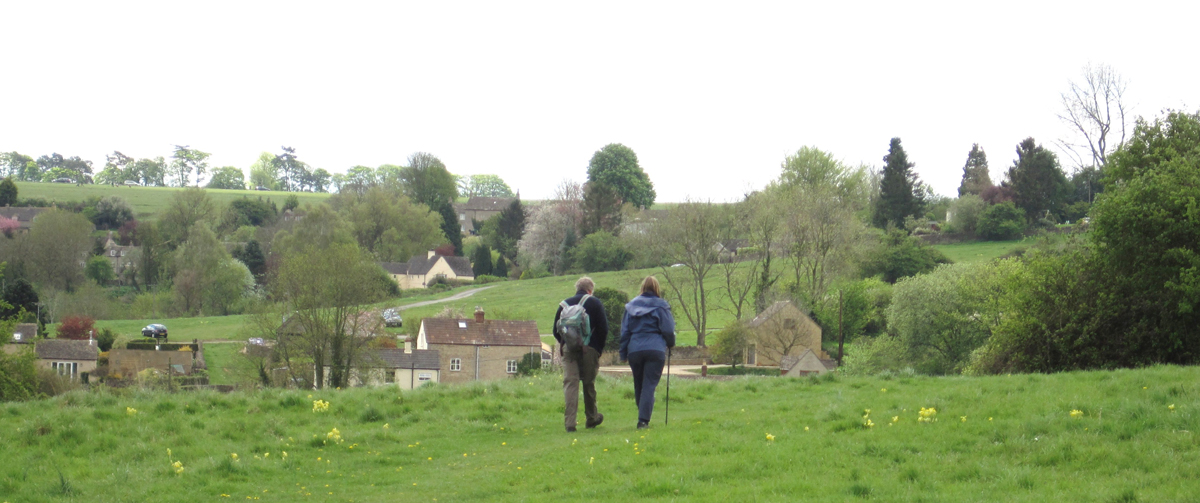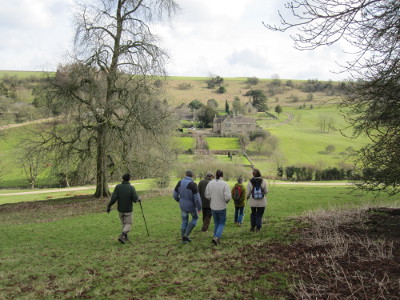
Minchinhampton is a great base for walks with wildlife interest. There are a variety of routes, both short and long that can be started from Minchinhampton itself. This area of Gloucestershire also has many nature reserves that are accessible with short car rides.
On the last Sunday of each Month the Minchinhampton Walking and Wildlife Group normally organises a short walk (about two hours duration). Most of the walks start from the Bell Lane car park in Minchinhampton (behind the church and local primary school - see the "Google" map) at 10:30 am, usually departing on foot. Occasionally we share cars to venture further afield. The morning usually ends with a gathering at a local pub for Sunday lunch. If you wish to join us for lunch, you will need to contact the walk organizer in advance so that a table can be booked for an appropriate number, otherwise just turn up.
See the "Events" listing for details of up-coming activities.
We have also documented a number of our walks so that you can follow them independently. See the links below.

The walks documented in the associated menu items are divided into several categories:
- Short walks that can be started from the center of Minchinhampton (or the Bell Lane car park, or any other car park on the Common), generally taking two hours or less. (It is, of course, also possible to make longer walks by joining legs of these short walks together.)
- Walks that involve a short car journey, but are still mostly of about two hours duration.
- Longer walks that will take three to five hours (i.e. you probably need to be relatively used to all-day walking and may well need to take a picnic, or plan lunch at a convenient pub - when available).
The walks are documented in these pages using Google Maps as well as descriptive text. It will usually be possible to download a PDF document describing the walk and in some cases a GPX file that can be loaded into GPS or GPS-enabled smart phone for guidance. The descriptions will generally note the wildlife that can be observed at appropriate times of year (and with the usual helping of luck). We do not route any of the walks through particularly fragile wildlife sites (at least if we know about them).

Please note: while the compilers of these walk descriptions have taken reasonable care to make them accurate and to keep walkers on legal and reasonably safe routes, they should be treated as an approximate guide, usable in conjunction with a map and your own common sense and previous walking experience. They are not intended to be definitive sets of instructions that could be followed by novice walkers without other assistance. It is always your own responsibility to ensure that you stay on rights-of-way and we always advise taking an Ordinance Survey map as well as our walk guide and checking the route as you go. Similarly, it your own responsibility to assess any risks you encounter on the walks, such as bulls in fields, tricky styles, nettles, road crossings, stream crossings, slippy ground and so on. Whether you consider such things a hazard or a pleasure is a matter of personal taste, fitness and competence. Conditions on the ground may also have changed since we wrote the guide. Coping with this type of stuff is partly what country walking is about and we don't want all these hazards manicured away to the detriment of the whole experience, and we assume that you accept the same minor risks to get access to the pleasures of country walking.

Equipment: We also assume that you will go with appropriate outdoor equipment for the terrain. In general, proper walking shoes or boots make the walking more enjoyable because they have a good grip so you are less likely to slip, and on the whole they are better at keeping water out on soggy ground. However, in dry weather some of our walks are feasible in stout trainers. Don't expect any footwear less robust than that to survive in the state in which they started the walk. Mostly, we find we prefer lightweight walking boots, apart from the Winter, when on some routes a good pair of really waterproof boots will make the whole experience much more comfortable. Well-fitting wellington boots can be advisable when we specifically go looking at wildlife in our water courses, or on certain local paths that are known to get pretty muddy in winter. You will need to make your own choice between wellies and boots according to personal taste.
Some of us walk with sticks: in summer they are mainly used to get nettles out of the way while we attempt an overgrown path. In winter they can be a real help in sticky/slippy mud especially on slopes.
Longer walks involve more variety of terrain. We assume that if you are prepared to tackle an all day walk you probably already know what kit will suit you in our very varied local countryside.
You are, of course, welcome to email the webmaster (at minchwildwalks.org.uk) with information about inaccuracies in our descriptions.

